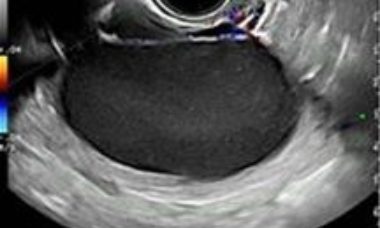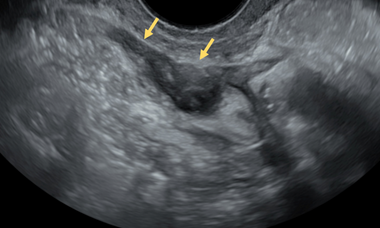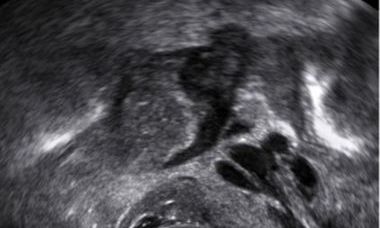Explore chapters on Endometriomas, Adenomyosis, Deep endometriosis, Superficial endometriosis and Extrapelvic sites of endometriosis.
Endometriomas
Endometriomas
Endometriosis is a benign estrogen dependent disease that is defined by the presence of endometrial glandular tissue outside of the uterus. It is most often localised in the ovary giving rise to a clear demarcated ovarian cyst, containing altered blood: the endometrioma.
Adenomyosis
Sonographic features considered typical for adenomyosis are echogenic subendometrial lines and buds, hyperechogenic islands, myometrial cysts, fan‐shaped shadowing, an irregular or interrupted junctional zone, translesional vascularity, asymmetrical thickening of the myometrium, and/or an enlarged globular uterus.
Superficial Endometriosis
Endometriosis is an enigmatic, chronic inflammatory disease of unknown etiology, characterised by ectopic growth of endometrial-like cells outside the uterus.
Extrapelvic sites of Endometriosis
Extrapelvic endometriosis most often affects the gastrointestinal tract, umbilicus, inguinal area, cesarean scar, diaphragm and pelvic nerves. The diagnosis is challenging and imaging methods can be used to access suspected lesions, and to evaluate the pelvic cavity since isolated extraperitoneal endometriosis is rare.
Deep Endometriosis
Explore chapters on deep endometriosis




